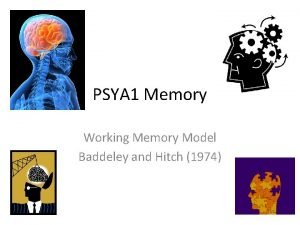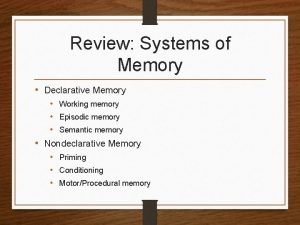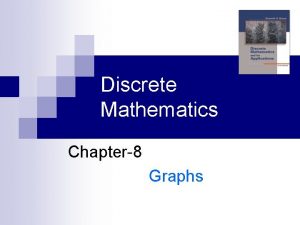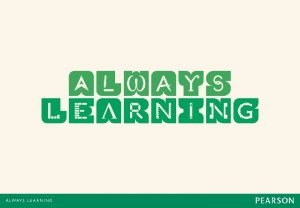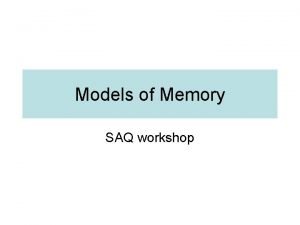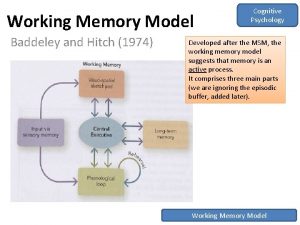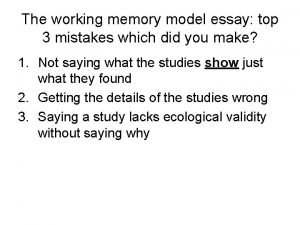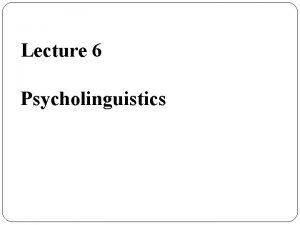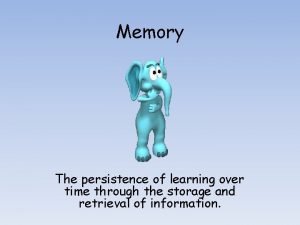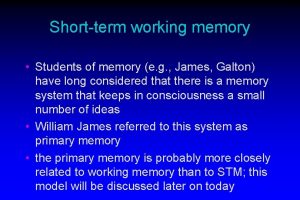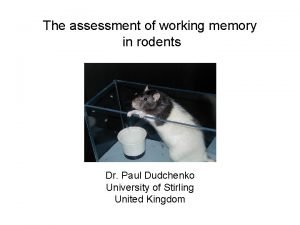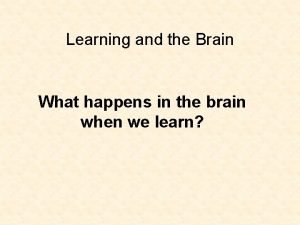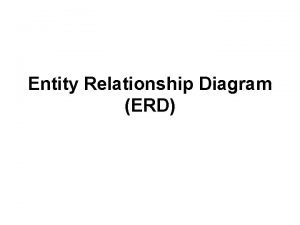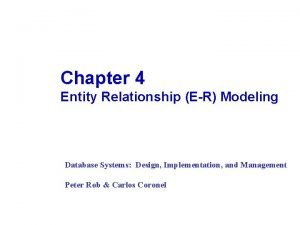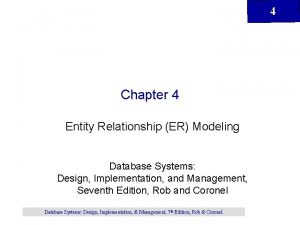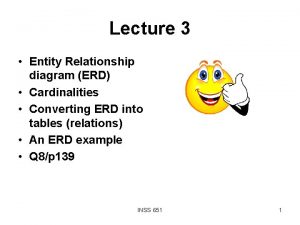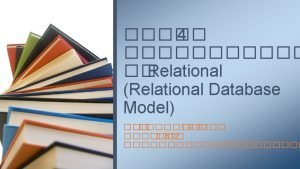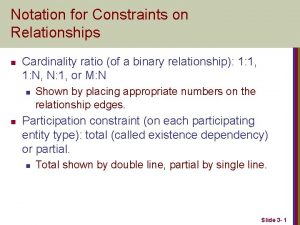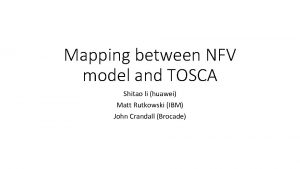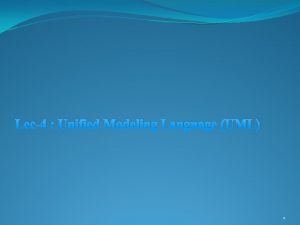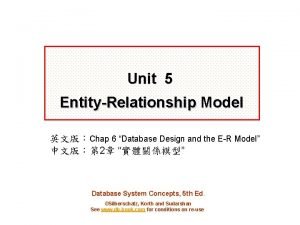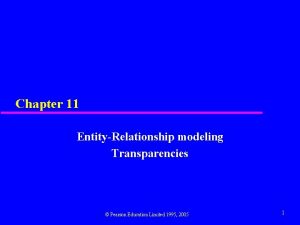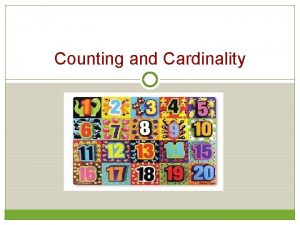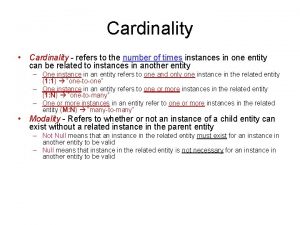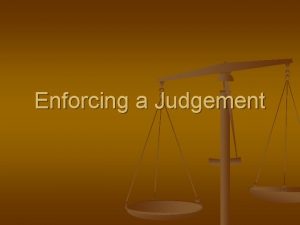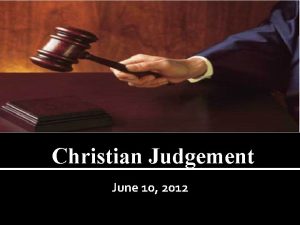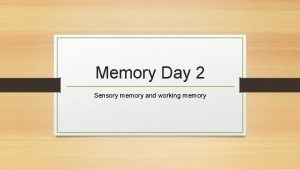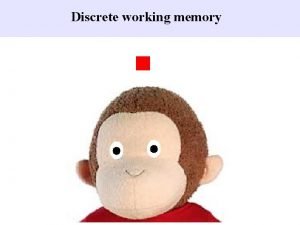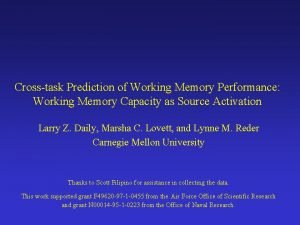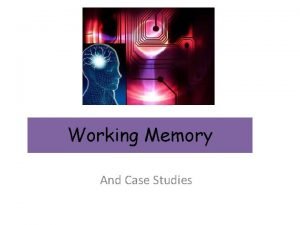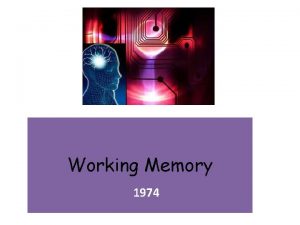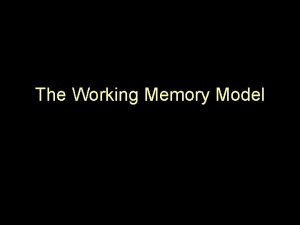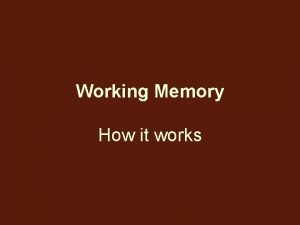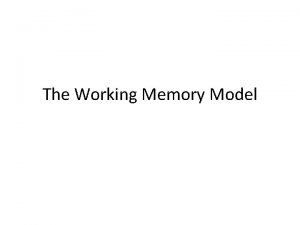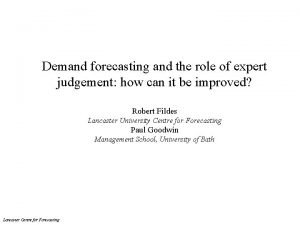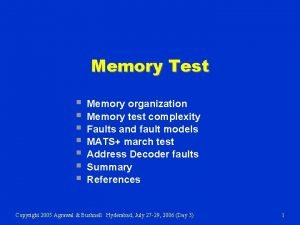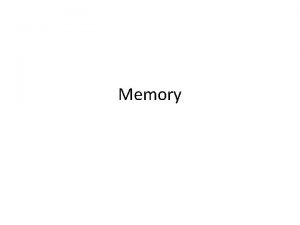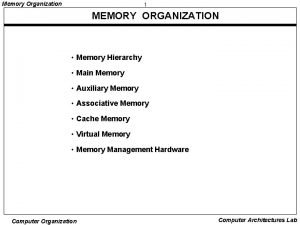The role of working memory in cardinality judgement






































- Slides: 38

The role of working memory in cardinality judgement, ordinality judgement and calculation Helene Vos (KU Leuven), Wim Gevers (ULB) & Bert Reynvoet (KU Leuven)

Numerical symbol processing Calculation

Underlying numerical symbol processing • Domain-specific factors • Domain-general factors o o Cardinality Ordinality o Working Memory

Cardinality • Number of elements in a set (e. g. a football team consists of eleven football players)

Cardinality • Numerical Comparison Task: Standard Distance Effect (Ansari, 2008)

Ordinality • Position of an item in a sequence (the football team is ranked seventeenth in the leage and is ranked after the sixteenth and before the eighteenth)

Ordinality • Ordinal judgement task: Reversed distance effect (Lyons & Ansari, 2015)

Working memory models • Structural Models o Baddeley’s Model (Baddeley & Hitch, 1974) • Functional Models o Oberauer’s model (Oberauer, 2002)

Baddeley’s working memory model (CE) (VSSP) (PL)

Oberauer’s working memory model • Activated part of long-term memory • Region of direct access • Focus of attention LTM Direct access Focus of Attention

Oberauer’s working memory model Focus of attention Active row: Direct Access Passive row: Long-term memory

Calculation • Retrieval is the dominant strategy for multiplication (96%) • Subtraction relies more on alternate strategies such as counting and inversion and less on retrieval (only 58%) (Campbell & Xue, 2001)

Research questions 1. What is the relation between cardinality and ordinality and calculation? 2. Is the relation between cardinality/ordinality and calculation still there when controlled for working memory?

Methods Individual session • Working memory tasks o Baddeley’s model: Digit Span & Corsi Blocks Ø Digit Span Forward: Phonological loop Ø Digit Span Backward: Phonological loop* Central Excutive Ø Corsi Blocks Forward: Visuo-spatial sketchpad Ø Corsi Blocks Backward: Visuo-spatial sketchpad * Central Executive o Oberauer’s model: Memory Updating task Ø Active row: Direct acces Ø Passive row: Long-term memory

Methods Collective session • Basic number processing tasks o o Cardinality: Numerical comparison task Ordinality: Ordinal judgement Task • Calculation tasks o o o Single Digit Multiplication Multiple Digit Subtraction Tempo Test Arithmetic

Methods • 89 participants o o Mean age= 19, 80 (SD= 5, 48) ♀ N= 71 ♂ N=18 • 21 participants removed o o 6 missing data: -3 no-shows in one of the sessions -3 participants one of the tasks logged incorrectly 15 outliers: performance >3 SD above group mean on one of the experimental tasks

Basic number processing tasks • Numerical comparison task Combined ACC/RT-score (RT/ACC) o Distance: distance 1 and distance 3 o 64 trials

Basic number processing tasks • Ordinal judgment task Combined ACC/RT-score (RT/ACC) o 84 trials Small Distance Large Distance Ascending (e. g. 123) (e. g. 159) Descending (e. g. 321) (e. g. 951) Non-order (e. g. 312) (e. g. 195) (Lyons & Beilock, 2009; Rubinsten, 2013)

Working memory tasks Baddeley • Digit Span ACC o o Forward: range span: 2 -9 Backward: range span 2 -8 Two items per span Task is terminated when 2 items of one span are recalled incorrectly WAIS-IV-NL (Wechsler, 2008)

Working memory tasks Baddeley • Corsi Blocks ACC o o Forward: range span 2 -9 Backward: range span 2 -8 Two items per span Task is terminated when 2 items of one span are recalled incorrectly (Kessels et al. 2000; 2008)

Working Memory tasks Oberauer • Memory Updating Median RT • 24 trials • 2 to 6 values (Oberauer, 2002)

Calculation tasks • Multiple Digit Subtraction Combined ACC/RT-score (RT/ACC) o 96 trials (16 trials in each condition) o Verification Task o Borrowing & Non-borrowing Borrowing (e. g. 32 -15) Non-borrowing (e. g. 69 -31) 17 38 Incorrect 27 48 Incorrect 13 32 Correct (Linsen, Verschaffel, Reynvoet & De Smedt, 2014)

Calculation tasks • Single Digit Multiplication Combined ACC/RT-score (RT/ACC) o 96 trials (32 trials in each conditions) o Verification task o Table related and table unrelated errors e. g. 7*7 Correct 49 Incorrect Related 56 Incorrect Unrelated 48 (Romero, Rickard & Bourne, 2006)

TTR • Time-limited test: One minute for each column ACC (De Vos, 1992) • Five columns of forty items o o o Addition Substraction Multiplication Division Mixed

Processing speed task • Control Measure: General processing speed • Participant has to react as fast as possible to an appearing square in the middle of the screen (Reigosa-Crespo et al. , 2012)

Analyses • Correlations o o o Basic number processing skills (Cardinality & Ordinality) Calculation tasks (Subtraction, Multiplication, TTR) Controlling for Processing Speed • Regression o o o Independent variables: Calculation tasks (Subtraction, Multiplication, TTR) Predictors: Working memory, Cardinality and Ordinality Controlling for Processing Speed

Results • Partial Correlations controlling for processing speed 1 2 3 4 Cardinality 1 Ordinality . 406** 1 Subtraction . 383** . 626** 1 Multiplication . 448** . 511** . 642** 1 TTR -. 369** -. 463** -. 544** -. 751** *p<. 05; **p <. 01 5 1

Results • Independent variable: Subtraction Model Standardized β t p R² ΔR 1. Processing Speed . 083 . 673 . 504 0. 007 2. Processing Speed . 037 . 290 . 773 0. 062 0. 055 Digit Span Forward -. 223 -1. 637 . 107 Digit Span Backward -. 017 -. 122 . 903 Corsi Blocks Forward -. 048 -. 388 . 699 Corsi Blocks Backward -. 027 -. 217 . 829 3. Processing Speed . 015 . 148 . 883 0. 446** 0. 384** Digit Span Forward -. 133 -1. 238 . 221 Digit Span Backward . 035 . 327 . 745 Corsi Blocks Forward -. 015 -. 158 . 875 Corsi Blocks Backward . 117 1. 146 . 257 Cardinality . 181 1. 662 . 102 Ordinality . 556 5. 147 <. 001 *p<. 05; **p <. 01

Results • Independent variable: Multiplication Model Standardized β t p R² ΔR 1. Processing Speed . 094 . 766 . 447 0. 009 2. Processing Speed . 054 . 416 . 679 0. 036 0. 027 Digit Span Forward -. 137 -. 993 . 324 Digit Span Backward -. 025 -. 178 . 860 Corsi Blocks Forward . 079 . 623 . 536 Corsi Blocks Backward -. 047 -. 368 . 714 3. Processing Speed . 027 . 249 . 805 0. 363** 0. 327** Digit Span Forward -. 055 -. 476 . 635 Digit Span Backward . 006 . 049 . 961 Corsi Blocks Forward . 105 . 999 . 322 Corsi Blocks Backward . 110 1. 007 . 318 Cardinality . 316 2. 711 . 009 Ordinality . 402 3. 475 . 001 *p<. 05; **p <. 01

Results • Independent variable: TTR Model Standardized β t p R² ΔR 1. Processing Speed -. 072 -. 582 . 562 0. 005 2. Processing Speed -. 056 -. 427 . 671 0. 017 0. 012 Digit Span Forward . 033 . 235 . 815 Digit Span Backward . 028 . 200 . 842 Corsi Blocks Forward . 002 . 014 . 989 Corsi Blocks Backward . 097 . 757 . 452 3. Processing Speed -. 034 -. 299 . 766 0. 260** 0. 243** Digit Span Forward -. 039 -. 314 . 754 Digit Span Backward -. 004 -. 033 . 973 Corsi Blocks Forward -. 022 -. 197 . 845 Corsi Blocks Backward -. 031 -. 263 . 793 Cardinality -. 224 -1. 784 . 079 Ordinality -. 386 -3. 094 . 003 *p<. 05; **p <. 01

Results • Independent variable: Subtraction Model Standardized t p R² ΔR β 1. Processing Speed . 083 . 673 . 504 0. 007 2. Processing Speed . 058 . 466 0. 044 0. 038 MU Active -. 069 -. 478. MU Passive . 222 . 1. 546 3. Processing Speed . 016 . 165 . 869 0. 422** 0. 377** MU Active . 031 . 261 . 795 MU Passive . 062 . 513 . 610 Cardinality . 163 1. 491 . 141 Ordinality . 547 4. 828 <. 001 *p<. 05; **p <. 01

Results • Independent variable: Multiplication Model Standardized β t p R² ΔR 1. Processing Speed . 094 . 766 . 447 0. 009 2. Processing Speed . 075 . 597 . 552 0. 032 0. 023 MU Active -. 057 -. 393 . 696 MU Passive . 176 1. 217 . 228 3. Processing Speed . 030 . 287 . 775 0. 343** 0. 310** MU Active -. 009 -. 069 . 945 MU Passive . 091 . 699 . 487 Cardinality . 304 2. 606 . 011 Ordinality . 367 3. 035 . 004 *p<. 05; **p <. 01

Results • Independent variable: TTR Model Standardized t p R² ΔR β 1. Processing Speed -. 072 -. 582 . 562 0. 005 2. Processing Speed -. 066 -. 520 . 605 0. 006 0. 001 MU Active . 003 . 022 . 983 MU Passive -. 039 -. 268 . 790 3. Processing Speed -. 029 -. 256 . 798 0. 261** 0. 254** MU Active -. 061 -. 463 . 645 MU Passive . 068 . 495 . 623 Cardinality -. 200 -1. 617 . 111 Ordinality -. 399 -3. 112 . 003 *p<. 05; **p <. 01

Discussion • Basic number processing skills are related to calculation • When controlled for WM only order processing stands out as significant predictor for subtraction and arithmetic • When WM controlled for WM cardinal and order processing are significant predictors for multiplication Cardinal processing and multiplication might rely on retrieval strategies as they are both highly automatized

Discussion • A specific feature of order processing is important for mathematical ability, which cannot be explained by WM. • Future research: what underlies order processing? o o Serial scanning? Associations between numbers?

Discussion • Future research: what underlies order processing? o Serial scanning: Items are scanned in short-term memory with one item at a time

Discussion o Associations between successive items where each item acts as a retrieval cue for the next item Item #1 Item #2 Item #3 Item #4 Item #5

Thank you for your attention! Contact: helene. vos@kuleuven. be
 Which memory is the actual working memory?
Which memory is the actual working memory? Smart work and hard work
Smart work and hard work Pembentukan logam
Pembentukan logam Advantage of hot working
Advantage of hot working Hot working and cold working difference
Hot working and cold working difference Differentiate between hot working and cold working
Differentiate between hot working and cold working Working memory model
Working memory model Working memory
Working memory Directed pseudograph
Directed pseudograph Automated working memory assessment (awma)
Automated working memory assessment (awma) Working memory model saq
Working memory model saq Baddeley's theory of working memory
Baddeley's theory of working memory Working memory essay
Working memory essay Drc model of reading
Drc model of reading Memory is the persistence of learning over time
Memory is the persistence of learning over time Slave systems working memory model
Slave systems working memory model Working memory
Working memory Working memory
Working memory Number cardinality
Number cardinality Fully attributed erd
Fully attributed erd Entity occurrence diagram
Entity occurrence diagram Owl hierarchy
Owl hierarchy Cardinality and modality
Cardinality and modality Er
Er Erd to table conversion
Erd to table conversion Degree cardinality
Degree cardinality Cardinality and modality
Cardinality and modality Cardinality and modality in database
Cardinality and modality in database Min max notation er diagram
Min max notation er diagram Tosca
Tosca Cardinality ratio constraint adalah
Cardinality ratio constraint adalah Language
Language Database relationship symbols
Database relationship symbols Cardinality and countability
Cardinality and countability Database cardinality
Database cardinality Cardinality vs multiplicity
Cardinality vs multiplicity In a minimum cardinality, minimums are generally stated as
In a minimum cardinality, minimums are generally stated as Cardinality in cognos
Cardinality in cognos Cardinality and modality
Cardinality and modality






